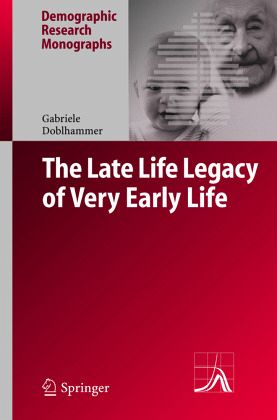
The Late Life Legacy of Very Early Life
Versandkostenfrei!
Versandfertig in 1-2 Wochen
77,99 €
inkl. MwSt.
Weitere Ausgaben:

PAYBACK Punkte
39 °P sammeln!
This stimulating, carefully-researched book on The Late Life Legacy of Very Early Life by Dr. Gabriele Doblhammer is the second volume of a new series of Demographic Research Monographs published by Springer Verlag. The topic of the book is fascinating. Is a person's lifespan influ enced by health and nutrition in-utero and shortly after birth? If so, why? The answers uncovered by the diligence, demographic and statistical ex pertise, and probing intelligence of the author are surprising but convinc ing. To pry open the mystery of the lingering impact of very early life, Dr. Doblharnmer focuse...
This stimulating, carefully-researched book on The Late Life Legacy of Very Early Life by Dr. Gabriele Doblhammer is the second volume of a new series of Demographic Research Monographs published by Springer Verlag. The topic of the book is fascinating. Is a person's lifespan influ enced by health and nutrition in-utero and shortly after birth? If so, why? The answers uncovered by the diligence, demographic and statistical ex pertise, and probing intelligence of the author are surprising but convinc ing. To pry open the mystery of the lingering impact of very early life, Dr. Doblharnmer focuses on month of birth. It turns out that people born in some months live substantially longer on average than people born in other months, not because of astrological forces but for reasons of health and nutrition. Dr. Doblhammer was educated in statistics and demography and earlier this year was the first person ever to receive the "Habilitation" de gree, the recognition given in the German-speaking world to proven scho lars who are qualified to become professors, in Demography. This book, which is evidence that she fully deserves this award, will not only provide important new fmdings about the legacy of early life but will also serve as a comprehensive foundation of knowledge on which future scholars can build. The series of Demographic Research Monographs is under the editorial supervision of the Max Planck Institute for Demographic Research. Prof. James W. Vaupel, Founding Director of the Institute, is Editor-in-Chief.














